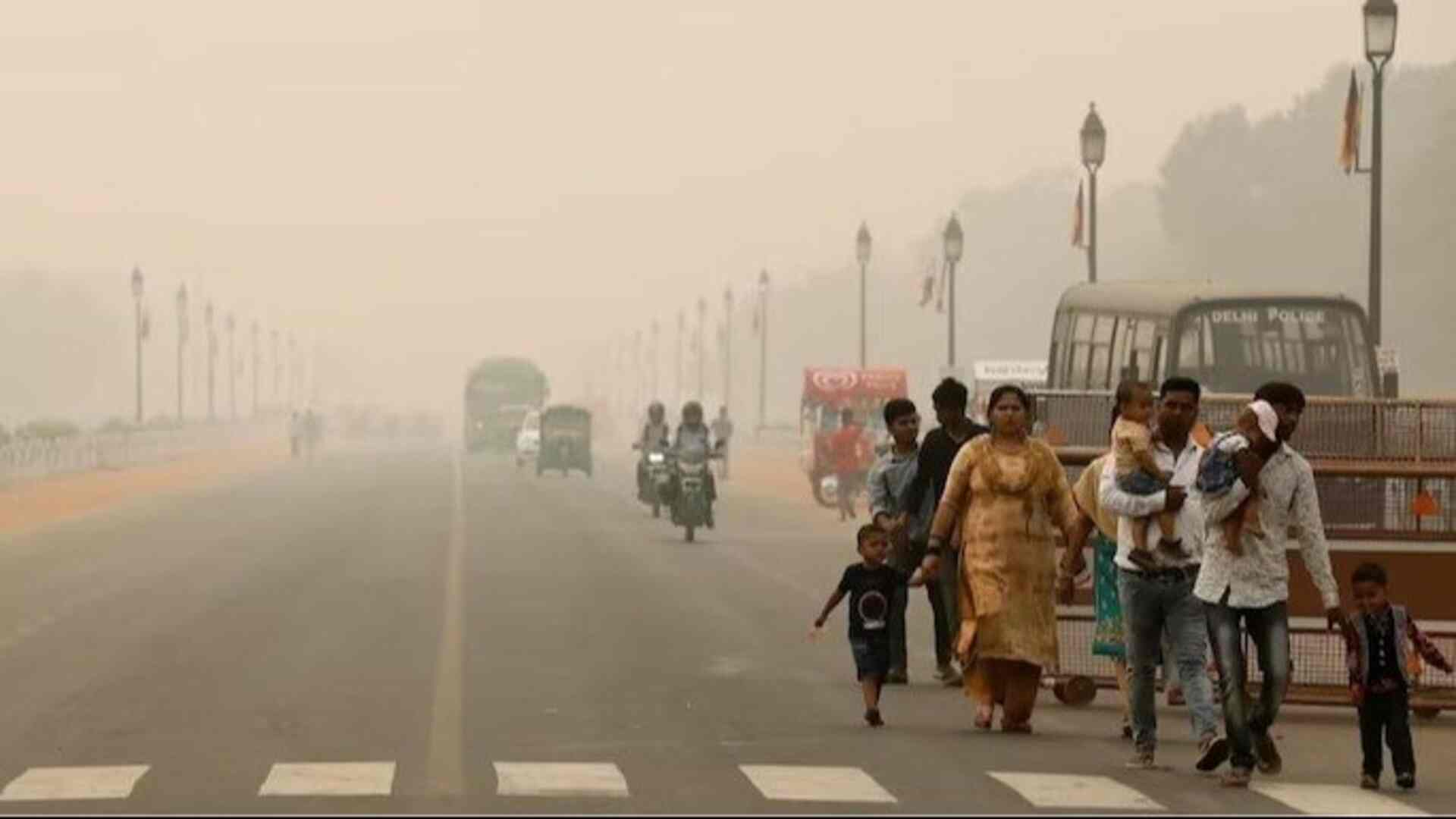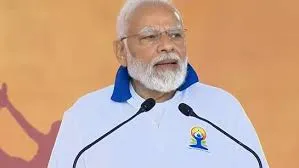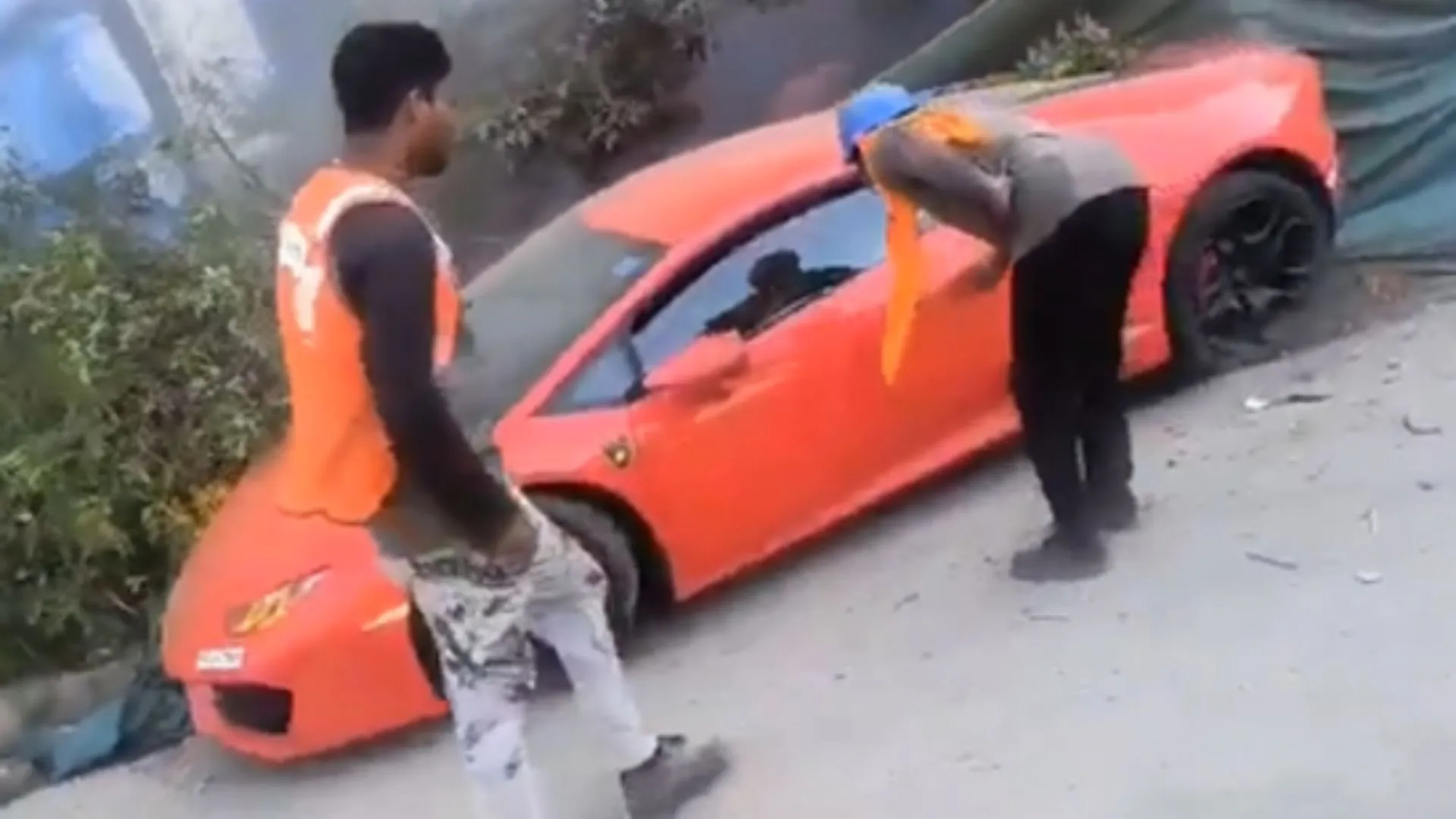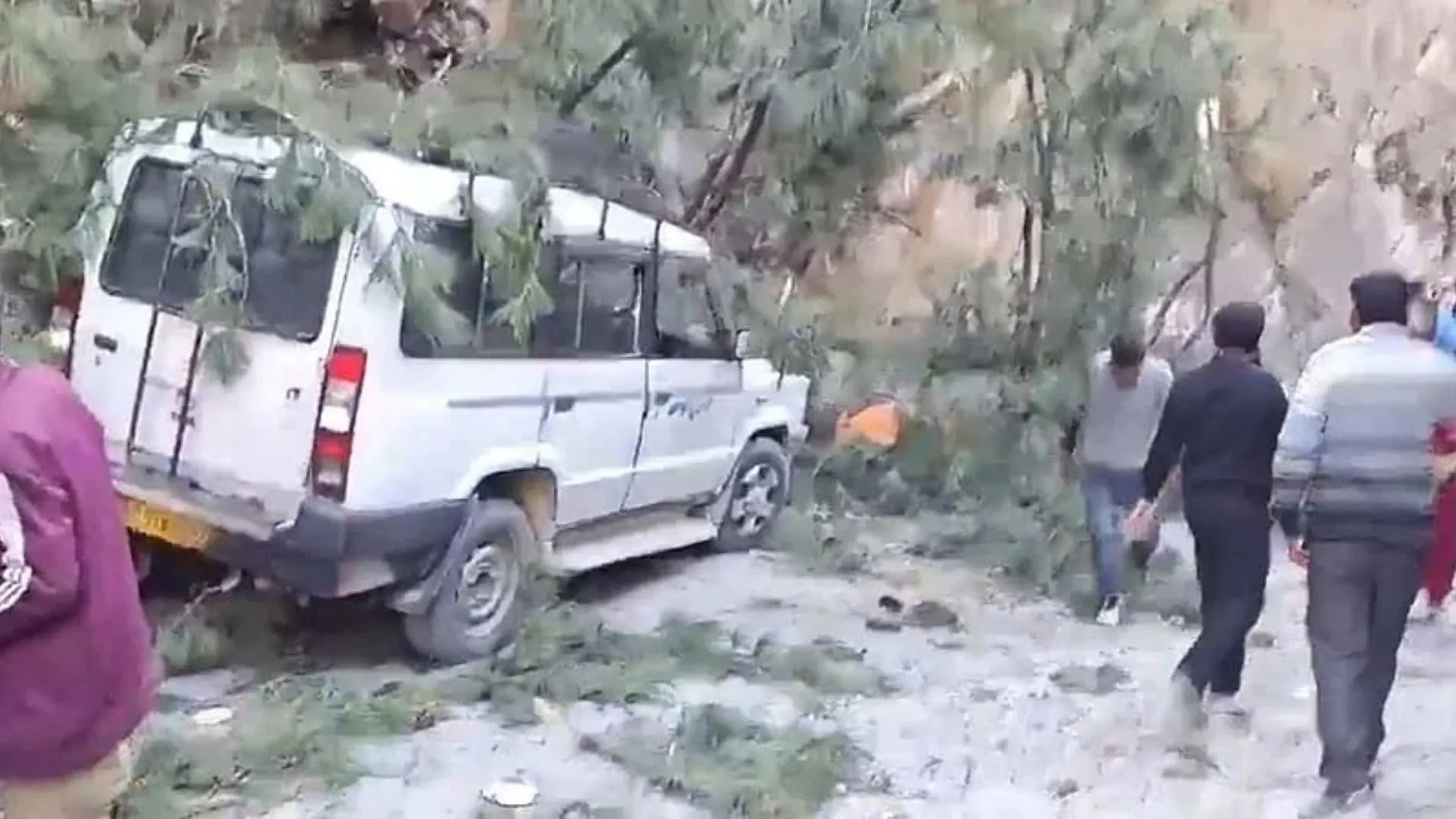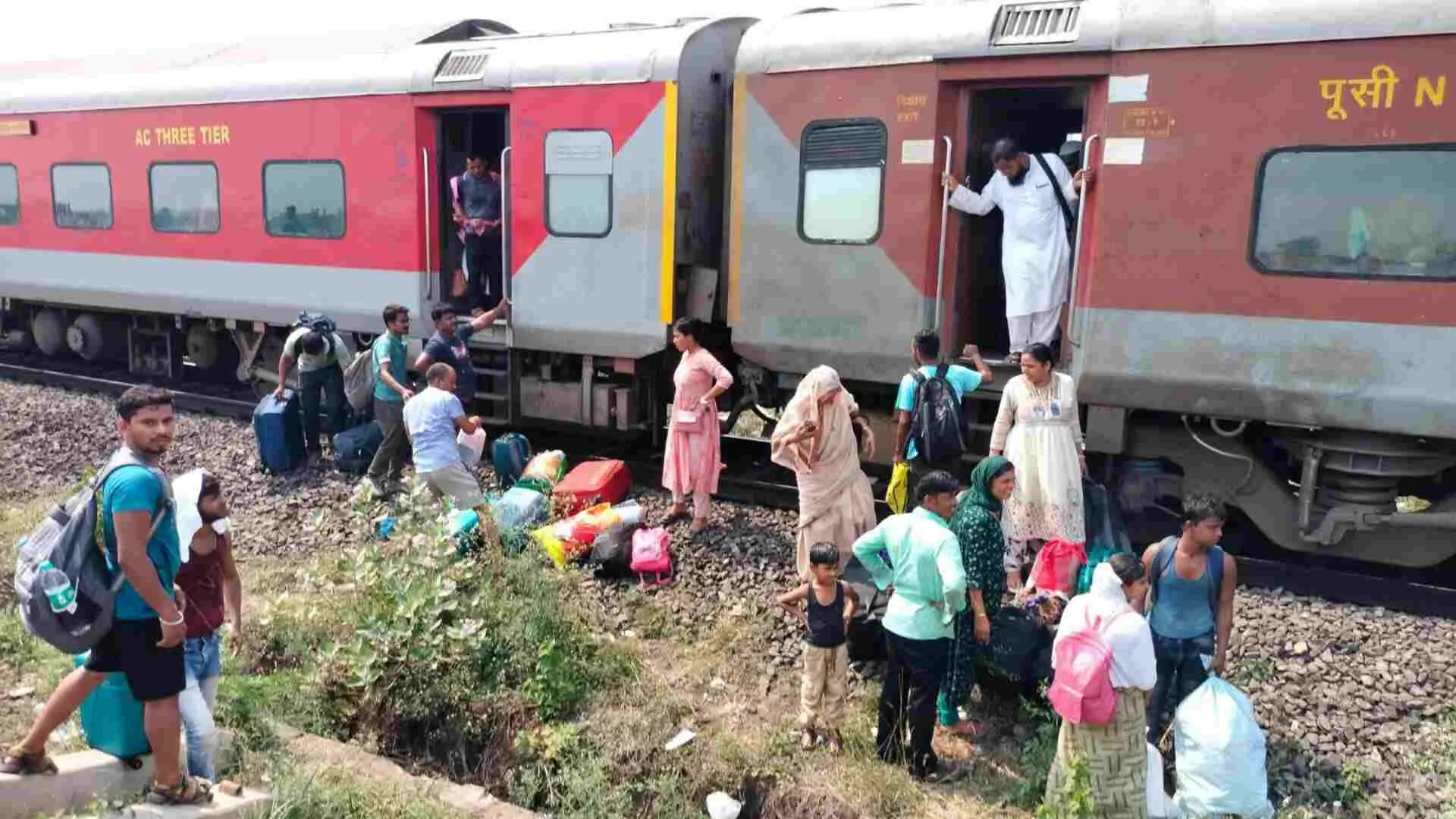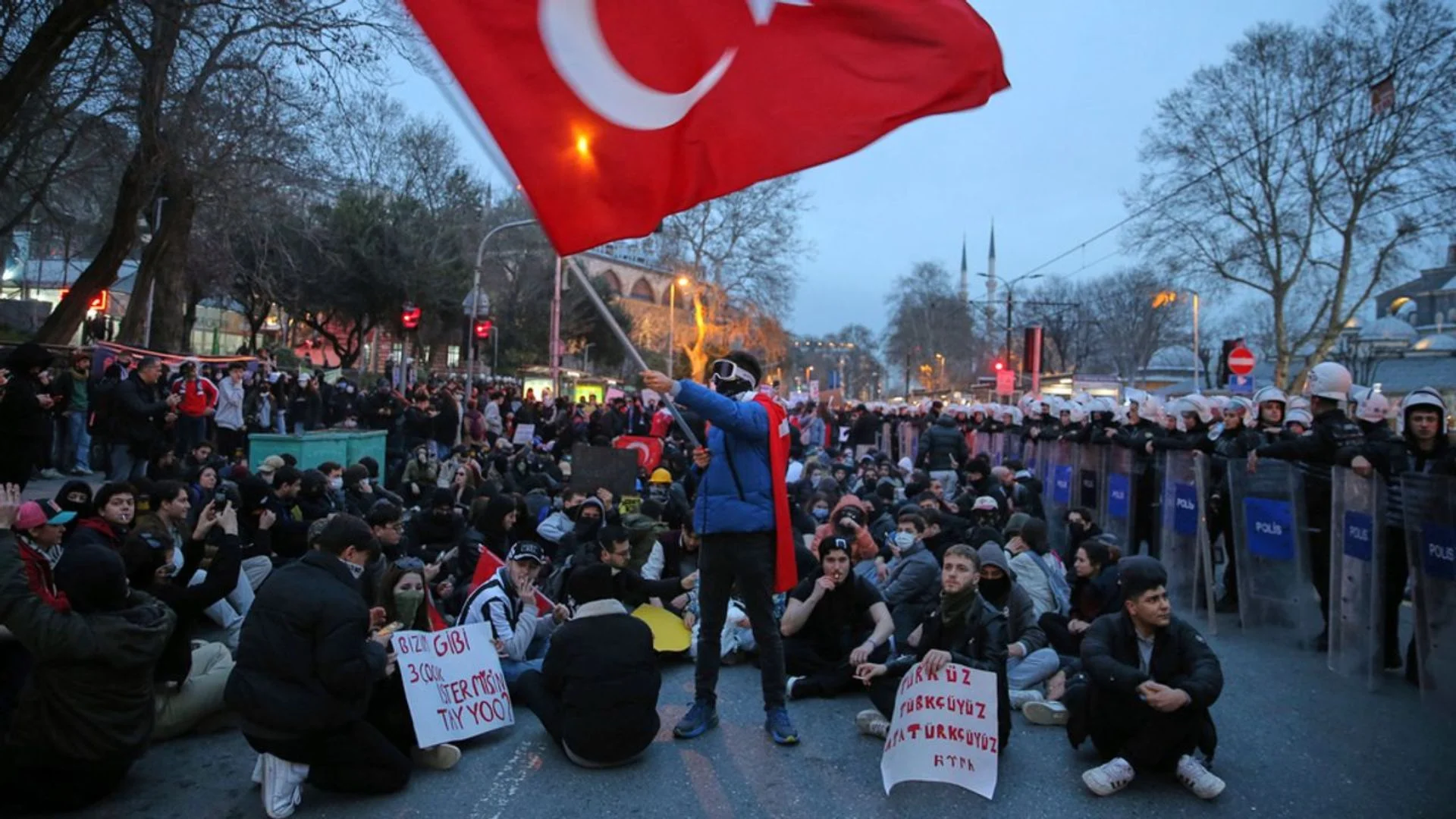Delhi’s air quality plummeted back into the ‘severe’ category on Wednesday morning, with a thick layer of smog covering parts of the city, significantly reducing visibility. The Air Quality Index (AQI) reached a hazardous level of 424 by 9 am, marking a return to severe pollution levels after two consecutive days in the “severe plus” category.
The Central Pollution Control Board (CPCB) reported that Delhi’s AQI remained in the ‘severe’ category, with areas like Anand Vihar (454), Bawana (459), and Mundka (465) recording some of the highest levels. The smog was especially visible around India Gate and Kartavya Path, where residents continued their morning routines amidst the haze. The fog also caused delays in train services, with 13 trains running late and 9 rescheduled due to the poor visibility at New Delhi Railway Station.
Toxic foam continued to accumulate in parts of the Yamuna River, notably near Kalindi Kunj and Okhla Barrage, as drones captured widespread images of the frothy pollution. The environmental impact was stark, with large areas of the river covered in the harmful foam.
In response to the worsening air quality, Delhi Police conducted vehicle checks on Tuesday night to enforce Stage IV of the Graded Response Action Plan (GRAP). This stage includes restrictions on the movement of older diesel vehicles and non-essential trucks, while essential services are exempted.
Meanwhile, Delhi Environment Minister Gopal Rai urged Union Minister Bhupendra Yadav to convene an emergency meeting to discuss cloud seeding as a potential measure to reduce pollution. Rai emphasized the need for immediate action to disperse the smog layer and tackle the pollution effectively. He also noted that despite preparations for cloud seeding since August, no meeting had been convened to move forward with the plan.
The Delhi government has already implemented a range of measures, including vehicle bans, staggered office timings, and school closures for Classes 10 and 12. The government is also considering work-from-home measures to reduce pollution further.
With Delhi’s AQI remaining in the “severe” category, the Supreme Court recently directed the local and NCR governments to strictly enforce GRAP Stage IV measures to combat the hazardous pollution levels.

